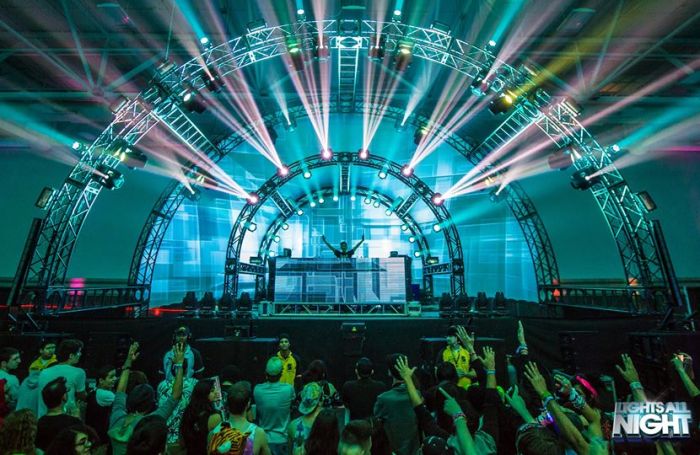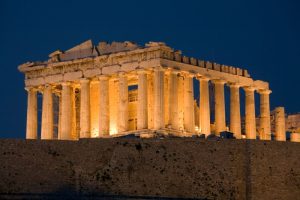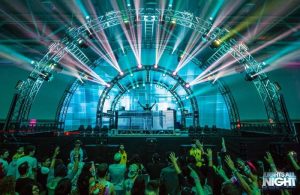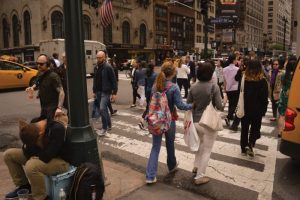
Music festivals are more than just concerts; they’re immersive experiences. Imagine days filled with electrifying performances, vibrant crowds, and unforgettable moments. But planning the logistics – travel, accommodation, tickets – can be overwhelming. Music festival travel packages offer a seamless solution, bundling these essentials into convenient, often cost-effective, packages tailored to various budgets and preferences. This guide explores the intricacies of these packages, from understanding their components and target audiences to analyzing market trends and competitive landscapes.
We’ll delve into the different types of packages available, highlighting the advantages and disadvantages of various booking channels. We’ll also compare music festival packages to other travel niches, providing a broader perspective on the market and its unique position within the travel industry. Ultimately, this guide aims to equip you with the knowledge to navigate the world of music festival travel packages effectively, whether you’re a seasoned festival-goer or a first-timer.
Defining Music Festival Travel Packages

Music festival travel packages offer a convenient and often cost-effective way to experience the thrill of a major music event. These packages bundle together essential elements of a festival trip, simplifying the planning process and potentially saving you money compared to booking each component separately. They cater to a wide range of budgets and preferences, ensuring accessibility for various festival-goers.Music festival travel packages typically include festival tickets, accommodation, and transportation.
Depending on the package, additional services might be offered, such as airport transfers, guided tours of the festival location, VIP access, or even exclusive merchandise. The specific components and their quality significantly influence the overall price.
Price Points and Inclusions
The cost of a music festival travel package varies considerably, depending on the festival’s prestige, the package’s inclusions, and the level of luxury offered. Budget packages might focus on providing the essentials – festival tickets and basic hostel or budget hotel accommodation – often relying on public transportation. Mid-range packages typically offer a balance between comfort and affordability, including better accommodation options (like comfortable hotels or Airbnb rentals) and potentially private transportation to and from the festival.
Luxury packages, on the other hand, provide a premium experience, with upscale accommodations (e.g., boutique hotels or even private villas), private transportation, VIP access to the festival, and potentially additional perks such as exclusive backstage tours or meet-and-greets with artists. For example, a budget package to Coachella might cost around $800-$1200, while a luxury package could easily exceed $5000.
Types of Music Festival Travel Packages: A Comparison
Budget packages prioritize affordability, focusing on essential elements like festival tickets and basic accommodation. These often involve shared rooms in hostels or budget hotels and utilize public transportation. Conversely, luxury packages emphasize comfort and exclusivity. They typically include premium accommodation (e.g., five-star hotels or private villas), private transportation (e.g., airport transfers and private shuttles), VIP access to the festival grounds, and potentially other perks like concierge services and gourmet dining experiences.
Mid-range packages strike a balance between the two, providing a comfortable experience without the exorbitant cost of luxury packages. For instance, a Glastonbury Festival package could offer a budget option with camping and shared shuttle services, a mid-range option with a hotel stay and private transport, and a luxury option including a VIP pass, private villa, and dedicated concierge.
Sample Music Festival Travel Package Itinerary
This example itinerary is for a hypothetical three-day music festival, “Summer Sounds,” in a fictional city called “Music City.”
Day 1: Arrival and Exploration
- Arrival at Music City International Airport (MCI).
- Private airport transfer to the designated hotel (The Grand Music City Hotel).
- Check-in and settle into the hotel room.
- Afternoon exploring Music City: visiting local attractions and enjoying the city’s atmosphere.
- Evening: Welcome dinner at a local restaurant.
Day 2: Festival Day 1
- Morning: Breakfast at the hotel.
- Private transportation to the Summer Sounds Festival grounds.
- Full day enjoying the festival: music performances, food vendors, and festival activities.
- Evening: Return to the hotel after the festival.
Day 3: Festival Day 2 & Departure
- Morning: Breakfast at the hotel.
- Private transportation to the Summer Sounds Festival grounds.
- Full day enjoying the festival: music performances, food vendors, and festival activities.
- Evening: Return to the hotel.
- Private airport transfer to MCI for departure.
Target Audience for Music Festival Travel Packages
Music festival travel packages cater to a diverse audience, but certain demographics and psychographics consistently emerge as key purchasers. Understanding these characteristics is crucial for effective marketing and package design. The typical customer isn’t just interested in attending a festival; they’re looking for a complete experience.Individuals who purchase music festival travel packages are motivated by a combination of factors extending beyond simply attending the event itself.
Convenience, enhanced experience, and the social aspect play significant roles in their purchasing decision. This segment values ease of planning, access to exclusive amenities, and the opportunity to share the experience with like-minded individuals.
Demographic and Psychographic Profile
The primary target audience for music festival travel packages tends to fall within the 25-45 age range. This demographic often possesses disposable income and a willingness to spend on experiences rather than material goods. Psychographically, these individuals are typically adventurous, social, and music-enthusiastic. They value convenience and seek seamless travel arrangements. They are often digitally savvy, relying heavily on online platforms for information and bookings.
A significant portion are also likely to be part of a larger group, friends or couples, further emphasizing the social aspect of their motivation. Sub-segments might include young professionals seeking a memorable weekend getaway or established music fans looking for a hassle-free way to attend their favorite festivals.
Motivations Behind Purchase
Several key motivations drive the purchase of music festival travel packages. First and foremost is convenience. These packages handle all the logistics, from flights and accommodation to festival tickets and potentially even ground transportation. This eliminates the stress and time commitment associated with planning a festival trip independently. Secondly, many packages offer enhanced experiences, such as VIP access, backstage passes, or exclusive meet-and-greets.
This adds value beyond the basic festival experience. Thirdly, the social aspect is a major draw. Packages often facilitate group travel, providing a built-in social network and fostering a sense of community among attendees. Lastly, the curated nature of these packages often appeals to those seeking a seamless and well-organized experience.
Marketing Campaign Targeting Young Professionals
A targeted marketing campaign for young professionals (25-35) could focus on the “ultimate weekend getaway” theme. Marketing materials could emphasize the convenience and stress-free nature of the package, highlighting the time saved in planning and the opportunity to enjoy a premium festival experience without the hassle. Social media marketing, specifically targeted Instagram and Facebook ads, would be highly effective, showcasing high-quality images and videos of previous festival events, emphasizing the fun and social aspects.
Influencer marketing, partnering with lifestyle and travel influencers popular with this demographic, could significantly boost brand awareness and generate bookings. The campaign could also offer exclusive early-bird discounts or loyalty programs to incentivize early bookings and repeat business.
Examples of Successful Marketing Strategies
Many festival organizers and travel companies successfully utilize a multi-channel approach to marketing. This often includes partnerships with relevant music blogs and websites, targeted social media advertising campaigns, and email marketing to nurture leads. Some companies have successfully leveraged user-generated content, encouraging attendees to share their experiences on social media using a unique hashtag. Others have partnered with travel influencers to create engaging content showcasing the benefits of their packages.
Effective strategies frequently emphasize the unique selling points of each package, such as VIP access or exclusive events, and highlight the convenience and stress-free nature of the overall experience. For example, a successful campaign might feature testimonials from past customers, emphasizing their positive experiences and the value they received from the package.
Competition and Market Analysis for Music Festival Travel Packages
The music festival travel package market is increasingly competitive, with numerous companies vying for a share of the lucrative travel and entertainment sector. Understanding the competitive landscape is crucial for developing a successful and differentiated offering. This analysis examines three key competitors to highlight their strengths, weaknesses, and target audiences, ultimately informing strategies for market entry and growth.
Competitive Landscape Analysis
Several companies offer music festival travel packages, each with unique strengths and weaknesses. A comparative analysis helps to identify opportunities for differentiation and market penetration. The following table provides a snapshot of three prominent competitors. Note that pricing and specific package features can fluctuate depending on the festival and time of booking.
| Company Name | Package Features | Price Range | Target Audience |
|---|---|---|---|
| Festival Travel Experts | Festival tickets, accommodation (various options from budget hostels to luxury hotels), airport transfers, optional excursions and activities, dedicated festival concierge service. | $500 – $5000+ per person | Broad range, catering to budget-conscious travelers to luxury seekers; emphasizes ease and convenience. |
| Music Fest Getaways | Festival tickets, shared accommodation (typically Airbnb or similar), group transportation options, basic travel insurance. Focuses on group bookings and social experience. | $300 – $2000 per person | Younger, budget-conscious travelers prioritizing group experiences and affordability. |
| VIP Festival Adventures | Festival tickets (often VIP access), luxury accommodation (high-end hotels or private villas), private transportation, exclusive experiences (backstage passes, meet-and-greets), premium concierge service. | $2000 – $10000+ per person | High-net-worth individuals and those seeking an exclusive and luxurious festival experience. |
Differentiating a Music Festival Travel Package
Successfully navigating this competitive market requires a clear differentiation strategy. This involves identifying a niche market, offering unique value propositions, and effectively communicating those benefits to potential customers. For example, a company could specialize in eco-friendly festival travel, offering carbon-offsetting options and sustainable accommodation choices. Another approach might focus on specific genres of music, creating packages tailored to the preferences of fans of a particular artist or style.
Effective marketing and branding are also critical for building a strong brand identity and attracting the target audience. This might include partnerships with influencers, targeted social media campaigns, and engaging content marketing that highlights the unique aspects of the travel package.
Sales and Distribution Channels for Music Festival Travel Packages
Effective distribution is crucial for the success of music festival travel packages. Reaching the target audience requires a multi-channel approach, leveraging both online and offline strategies to maximize sales and brand visibility. The choice of channels depends on factors such as target market demographics, budget, and the festival’s location and scale.
Various sales channels offer unique advantages and disadvantages. A strategic blend is key to optimizing reach and conversion rates. Understanding the strengths and weaknesses of each allows for a targeted and efficient marketing plan.
Online Travel Agencies (OTAs)
OTAs such as Expedia, Booking.com, and Viator are significant players in the travel industry. Listing packages on these platforms provides access to a vast customer base.
- Advantages: Wide reach, established customer trust, built-in marketing infrastructure.
- Disadvantages: High commission fees, competition from other travel providers, dependence on OTA algorithms and marketing practices.
Direct Booking through the Festival Website or Dedicated Platform
Offering packages directly through the festival’s official website or a dedicated booking platform offers greater control and higher profit margins.
- Advantages: Higher profit margins, direct customer relationship building, ability to tailor packages and offerings specifically to the festival brand.
- Disadvantages: Requires significant investment in website development and marketing, requires managing bookings and customer service independently.
Partnerships with Travel Agencies and Tour Operators
Collaborating with specialized travel agencies or tour operators can extend reach to niche markets and leverage their existing customer base.
- Advantages: Access to specialized expertise and established networks, increased brand awareness within specific demographics.
- Disadvantages: Requires negotiation and agreement on commission structures, potential loss of control over aspects of the package offering.
Social Media Marketing and Influencer Collaboration
Social media platforms like Instagram, Facebook, and TikTok are powerful tools for reaching target audiences. Influencer marketing can significantly enhance brand visibility and drive sales.
- Advantages: Targeted advertising capabilities, cost-effective reach, opportunity to build brand engagement and community.
- Disadvantages: Requires ongoing content creation and management, reliance on algorithm changes and influencer performance.
Email Marketing
Email marketing remains a powerful tool for reaching potential customers directly. Targeted email campaigns can promote packages to specific segments of the audience.
- Advantages: High conversion rates, ability to personalize messaging, cost-effective for targeted campaigns.
- Disadvantages: Requires a well-maintained email list, needs to comply with email marketing regulations and avoid spam filters.
Marketing Plan: Reaching a Wider Audience
A successful marketing plan combines several channels to maximize reach and impact. For example, a music festival targeting a younger demographic might prioritize social media marketing and influencer collaborations, while a festival attracting an older demographic might focus on partnerships with established travel agencies and direct email marketing. A tiered approach, leveraging both high-reach and high-conversion channels, is often the most effective strategy.
Optimizing Sales Channels
Optimizing each channel requires a data-driven approach. Analyzing website traffic, conversion rates, and customer feedback provides valuable insights for improving performance. For example, A/B testing different website designs and marketing messages can identify the most effective strategies. Regularly reviewing and adjusting the marketing plan based on data analysis ensures ongoing improvement.
Comparative Analysis
Music festival travel packages represent a unique niche within the broader travel industry. Understanding how they compare to other travel offerings allows for better targeting, marketing, and competitive positioning. This analysis contrasts music festival packages with various other travel niches, highlighting key differences in features, target audiences, and price points.
Music Festival Packages vs. Religious Pilgrimages
Religious pilgrimages and music festival packages, while both involving travel and shared experiences, cater to fundamentally different motivations. Pilgrimages are driven by spiritual devotion and often involve visits to sacred sites and participation in religious ceremonies. Music festivals, conversely, focus on entertainment, communal celebration, and shared passion for music. The target audiences are distinct, with pilgrimages attracting devout individuals and families, whereas music festivals draw music enthusiasts of varying ages and backgrounds.
Price points can vary widely for both, depending on the destination and level of accommodation, but generally, pilgrimages may involve simpler accommodations compared to the wider range of options (from budget camping to luxury hotels) often available for music festivals.
Music Festival Packages vs. Wildlife Watching Tours
These two niches differ significantly in their primary focus. Wildlife watching tours emphasize nature appreciation, conservation, and observation of animals in their natural habitats. Music festival packages prioritize music and entertainment, often in a controlled festival environment. The target audience for wildlife tours consists of nature lovers, photographers, and conservationists, while music festivals attract music fans. Wildlife watching tours typically involve more eco-tourism aspects, with a focus on sustainability and responsible travel, whereas music festivals, while some are now incorporating sustainability initiatives, are primarily driven by entertainment.
Price points also vary, with wildlife tours often encompassing more expensive, specialized equipment and guides, compared to the potentially more affordable, basic packages for music festivals.
Music Festival Packages vs. Winter Sports Trips
Winter sports trips focus on physical activity and adventure in snowy environments, with skiing, snowboarding, and other winter activities as central features. Music festivals center around music performances and communal experience. The target audience for winter sports trips includes active individuals seeking adrenaline-pumping experiences, while music festivals attract a broader range of music enthusiasts, some of whom may not be physically active in the same way.
Winter sports trips usually involve higher upfront costs for equipment rentals and lift passes, while music festival packages vary in price based on the festival’s scale and the chosen accommodation.
Music Festival Packages vs. Island Hopping Vacations
Island hopping vacations emphasize relaxation, exploration, and enjoying diverse island cultures and landscapes. Music festivals focus on music and entertainment. The target audiences are different; island hopping appeals to those seeking relaxation and cultural experiences, whereas music festivals appeal to music lovers. Island hopping can range in price from budget-friendly backpacking to luxurious resort stays, while music festival packages vary in cost based on the festival’s location and the package’s inclusions.
Music Festival Packages vs. Voluntourism Opportunities
Voluntourism combines travel with volunteering, focusing on contributing to a community or cause. Music festivals primarily focus on entertainment. The target audience for voluntourism consists of individuals seeking to make a positive impact, whereas music festivals attract music enthusiasts. Price points can differ significantly; voluntourism may involve fees for program participation and accommodation, while music festival packages primarily focus on the festival experience itself.
Music Festival Packages vs. Photography Tours
Photography tours are geared towards capturing specific locations, subjects, or events through photography. Music festivals, while offering photo opportunities, primarily focus on the musical performances. The target audience for photography tours consists of photography enthusiasts, whereas music festivals appeal to music lovers. Photography tours often include specialized equipment and expert guidance, leading to higher costs than the potentially more accessible price points for music festival packages.
Music Festival Packages vs. Desert Expeditions
Desert expeditions emphasize adventure, exploration, and experiencing the unique environment of deserts. Music festivals are typically held in more developed areas. The target audience for desert expeditions includes adventure seekers and nature enthusiasts, while music festivals attract music lovers. Desert expeditions usually involve specialized equipment and guides, leading to higher costs compared to music festival packages.
Music Festival Packages vs. Underwater Adventures
Underwater adventures, like scuba diving or snorkeling, emphasize exploring underwater environments. Music festivals are land-based events. The target audience for underwater adventures includes individuals interested in marine life and underwater exploration, whereas music festivals attract music enthusiasts. Underwater adventures usually involve equipment rentals and potentially specialized certifications, leading to higher costs than most music festival packages.
Music Festival Packages vs. Art and Architecture Tours
Art and architecture tours focus on exploring cultural heritage, artistic creations, and architectural wonders. Music festivals are entertainment-focused events. The target audience for art and architecture tours consists of individuals interested in art, history, and culture, while music festivals appeal to music lovers. Price points can vary significantly, with art and architecture tours sometimes including museum entries and guided tours, while music festival packages mainly focus on the festival experience.
Comparative Table
| Travel Niche | Key Features | Target Audience | Price Point |
|---|---|---|---|
| Music Festival Packages | Music performances, communal atmosphere, accommodation, travel | Music enthusiasts, varying ages and backgrounds | Variable, depending on festival, accommodation, and inclusions |
| Religious Pilgrimages | Spiritual devotion, sacred sites, religious ceremonies | Devout individuals and families | Variable, often simpler accommodations |
| Wildlife Watching Tours | Nature observation, conservation, wildlife viewing | Nature lovers, photographers, conservationists | Often higher, including specialized equipment and guides |
| Winter Sports Trips | Skiing, snowboarding, winter activities | Active individuals seeking adventure | Higher upfront costs for equipment and lift passes |
| Island Hopping Vacations | Relaxation, exploration, diverse island cultures | Those seeking relaxation and cultural experiences | Variable, from budget-friendly to luxurious |
| Voluntourism Opportunities | Travel combined with volunteering | Individuals seeking to make a positive impact | Variable, including program fees and accommodation |
| Photography Tours | Capturing specific locations or subjects through photography | Photography enthusiasts | Often higher, including specialized equipment and guidance |
| Desert Expeditions | Adventure, exploration of desert environments | Adventure seekers and nature enthusiasts | Higher costs due to specialized equipment and guides |
| Underwater Adventures | Exploring underwater environments | Individuals interested in marine life | Higher costs due to equipment rentals and certifications |
| Art and Architecture Tours | Exploring cultural heritage, artistic creations | Individuals interested in art, history, and culture | Variable, sometimes including museum entries and guided tours |
Future Trends in Music Festival Travel Packages

The music festival travel package market is dynamic, constantly evolving to meet the changing demands of a diverse and increasingly experience-driven consumer base. Several key trends are shaping the future of this industry, impacting how businesses operate and how consumers engage with festival experiences. Understanding these trends is crucial for businesses to remain competitive and offer appealing packages.The increasing demand for personalized and curated experiences is a significant driver of change.
Consumers are no longer content with generic packages; they seek unique and tailored offerings that cater to their specific interests and preferences. This trend is pushing businesses to develop more sophisticated and flexible packages.
Sustainable and Eco-Conscious Travel
Growing environmental awareness is influencing travel choices. Consumers are increasingly seeking out eco-friendly options, demanding sustainable practices from festival organizers and travel providers. This includes carbon offsetting programs, partnerships with eco-conscious accommodations, and promoting responsible tourism practices at the festival itself. For example, a package could include a donation to a reforestation project or offer transportation options that minimize carbon emissions, such as shuttle buses or electric vehicle rentals.
Businesses can adapt by incorporating sustainable choices into their offerings, highlighting their environmental commitments, and partnering with organizations dedicated to environmental protection.
Experiential and Immersive Packages
Beyond just attending the festival, consumers desire immersive experiences that extend beyond the music itself. This trend is leading to the development of packages that incorporate pre- and post-festival activities, backstage access, VIP meet-and-greets, or exclusive workshops and masterclasses related to music, art, or culture. For example, a package could include a private yoga session with a local instructor, a guided tour of the festival city’s historical sites, or a cooking class focusing on local cuisine.
Businesses can capitalize on this trend by offering a range of add-on experiences that enhance the overall festival experience.
Technology Integration and Digital Enhancements
Technology is playing an increasingly important role in shaping the festival experience. This includes using mobile apps for seamless navigation, ticket management, and real-time information updates. Virtual reality (VR) and augmented reality (AR) technologies are also emerging as tools to enhance the festival experience, allowing consumers to virtually explore the festival grounds or interact with artists in new ways.
For instance, a package could include access to a dedicated VR experience showcasing behind-the-scenes footage or artist interviews. Businesses can adapt by incorporating technology into their packages, offering digital enhancements, and leveraging data analytics to personalize the customer journey.
Wellness and Well-being Focused Packages
A growing emphasis on health and wellness is influencing travel choices. Consumers are seeking out packages that incorporate opportunities for relaxation, rejuvenation, and self-care. This includes offering yoga classes, meditation sessions, healthy meal options, and access to spa facilities. For instance, a package could include daily yoga sessions, access to a wellness center, and healthy meal options at the festival.
Businesses can adapt by incorporating wellness activities into their packages, partnering with wellness providers, and emphasizing the importance of mental and physical well-being during the festival.
New Music Festival Travel Package Concept: “The Conscious Curator”
This package caters to the environmentally conscious traveler seeking a curated, immersive experience. It would include: eco-friendly accommodation in a boutique hotel or sustainable lodging option, carbon-neutral transportation to and from the festival (e.g., train travel with carbon offsetting), access to exclusive workshops on sustainable living or ethical fashion, participation in a local community project focused on environmental conservation, and VIP access to select festival events.
The package emphasizes mindful consumption, cultural immersion, and a commitment to responsible travel.
Visual Representation of a Music Festival Travel Package
Effective visual marketing is crucial for attracting potential customers to music festival travel packages. A strong visual identity can convey the excitement, energy, and overall experience offered, significantly impacting purchase decisions. This section details the design of promotional materials, focusing on a captivating image and an informative infographic.
Promotional Image for a Music Festival Travel Package
The promotional image should capture the essence of a vibrant music festival experience. Imagine a panoramic shot of a sun-drenched festival grounds, possibly overlooking a picturesque lake or rolling hills. The foreground features a group of diverse, happy individuals, silhouetted against the setting sun, enjoying the music. The lighting is warm and golden, emphasizing the celebratory mood. The color palette is vibrant, featuring bold shades of blues, oranges, and yellows, reflecting the energy of the music and the beauty of the natural setting.
The composition utilizes the rule of thirds, placing the group of people off-center to create a more dynamic and engaging image. The overall mood is one of carefree joy and unforgettable experiences, subtly hinting at the luxurious accommodations and additional services included in the travel package. A subtle logo for the travel company is placed discreetly in the corner.
Infographic Illustrating Key Features and Benefits
The infographic will utilize a clean and modern design. A central image, perhaps a stylized map of the festival location with musical notes integrated into the design, would serve as the focal point. Key features, such as accommodation details (e.g., a luxurious hotel or a stylish glamping tent), transportation arrangements (e.g., private shuttle service), and VIP access (e.g., backstage passes or exclusive meet-and-greets), are presented using icons and concise text descriptions.
Each feature is accompanied by a brief benefit statement highlighting the value proposition. For example, the hotel accommodation might be represented by an icon of a comfortable bed, with text stating “Luxury Hotel Stay: Relax and recharge in style after a day of music.” Data, such as the number of festivals included, or the total number of days covered by the package, can be visually represented using clear, easy-to-understand charts or graphs.
The color scheme should remain consistent with the promotional image, maintaining a cohesive brand identity. A call to action, such as “Book Your Dream Festival Experience Today!”, is prominently displayed at the bottom, along with contact information and a website address.
Ending Remarks
Music festival travel packages represent a dynamic and evolving sector within the travel industry. By understanding the target audience, competitive landscape, and emerging trends, businesses can craft compelling offerings and maximize their reach. From budget-friendly options to luxury escapes, the diversity of packages ensures there’s a perfect fit for every music lover. The key to success lies in offering a seamless and memorable experience that extends beyond the festival itself, creating lasting memories for attendees and solidifying the value proposition of these unique travel packages.
FAQ
What is included in a typical music festival travel package?
Typically, packages include festival tickets, accommodation (hotel, hostel, or camping), and sometimes transportation (airport transfers or shuttle services). Some higher-end packages may also include VIP access, meals, and excursions.
How far in advance should I book a music festival travel package?
Booking well in advance, especially for popular festivals, is highly recommended to secure the best prices and availability. Many packages sell out months, even a year, before the event.
What if I need to cancel my music festival travel package?
Cancellation policies vary depending on the provider and the specific package. Review the terms and conditions carefully before booking. Travel insurance is often recommended to mitigate potential losses.
Are there payment plan options available for music festival travel packages?
Some providers offer payment plan options, allowing you to spread the cost of your package over several months. Check with the provider directly to see if this is available.





